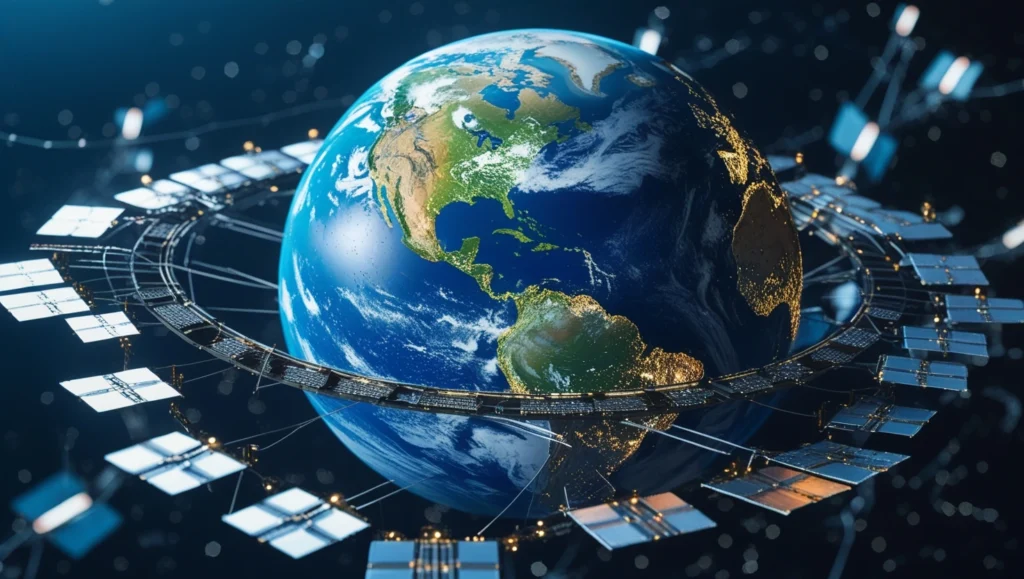How Starlink Is Revolutionizing Global Internet Access
In the ever-evolving landscape of global connectivity, Starlink, a division of SpaceX, is setting new benchmarks and reshaping the way we think about internet access. Spearheaded by Elon Musk, a figure synonymous with groundbreaking advancements in technology and space exploration, Starlink’s mission is to provide high-speed, low-latency broadband internet across the globe. This initiative is not just another feather in the cap of Elon Musk innovations but a transformative step toward bridging the digital divide. As we delve into the developments and trends of 2023-2024, it becomes evident that Starlink is not merely an ambitious project but a burgeoning reality that is revolutionizing global internet access.

The Genesis of Starlink
Before we explore the current trends and advancements, it’s crucial to understand the genesis of Starlink. Launched by SpaceX, Starlink’s primary goal is to deploy a constellation of small satellites in low Earth orbit (LEO) to provide high-speed internet to every corner of the planet, especially in underserved and remote areas. This vision stemmed from Elon Musk’s broader ambition to fund his dream of colonizing Mars, showcasing his knack for intertwining humanitarian goals with pioneering space exploration.

Starlink Global Internet: The 2023-2024 Landscape
The past year has been monumental for Starlink, with several significant milestones catapulting the initiative to new heights. Here’s a detailed look at the trends and developments shaping Starlink’s journey.
Expanding the Constellation
As of late 2023, Starlink’s constellation boasts over 5,000 satellites, a considerable leap from its initial deployments. This expansion not only enhances coverage but also improves the overall quality of service. The ambitious target set for 2024 aims to double this number, further solidifying Starlink’s global footprint.
Breakthroughs in Speed and Latency
Recent statistics from 2023 indicate that Starlink users enjoy average download speeds of up to 200 Mbps, with latencies as low as 20 milliseconds. These figures are a testament to the technological advancements and optimizations made by the Starlink team, promising an even brighter outlook for 2024.
Enhanced Accessibility and Affordability
One of Starlink’s pivotal developments in 2023 was the introduction of more affordable plans and the launch of portable terminals. This strategic move addresses two critical barriers to global internet access: cost and mobility. As we move into 2024, Starlink is expected to roll out even more competitive pricing models and flexible solutions, making high-speed internet accessible to a wider audience.
Regulatory Milestones
Navigating the complex web of global telecommunications regulations is a daunting task. However, Starlink has made significant strides in securing approvals across numerous countries and regions. By 2024, it’s projected that Starlink will have a near-global coverage license portfolio, a remarkable achievement that paves the way for truly global internet access.
Environmental and Space Traffic Concerns
As the constellation grows, so do concerns around space debris and environmental impact. Starlink has taken proactive steps to address these issues, implementing satellite de-orbiting protocols and collaborating with international space agencies to manage space traffic. These efforts are crucial in ensuring the sustainable expansion of global internet services.
The Impact of Starlink on Global Internet Access
Starlink’s rapid development and deployment have profound implications for global internet access. Here are key areas of impact:
Bridging the Digital Divide
With its ability to provide high-speed internet to remote and underserved areas, Starlink is directly contributing to bridging the global digital divide. This enhanced connectivity empowers communities with access to education, healthcare, and economic opportunities, fostering global development.
Catalyzing Economic Growth
High-speed internet is a cornerstone of modern economic systems. By providing reliable and fast internet access, Starlink enables businesses to thrive, especially in regions previously limited by connectivity issues. This can lead to increased productivity, innovation, and economic diversification.
Transforming Emergency Response and Connectivity
In disaster-hit areas, traditional communication infrastructures often suffer severe damage. Starlink’s satellite internet can be rapidly deployed to restore connectivity, facilitating emergency response and recovery efforts. This capability was notably demonstrated in various regions throughout 2023, showcasing the pivotal role of satellite internet in crisis situations.
Challenges and Future Directions
Despite its impressive strides, Starlink faces several challenges. Spectrum allocation, competition from other satellite internet providers, and the ongoing need for technological innovation are areas requiring constant attention. Furthermore, as Starlink moves closer to its goal of global coverage, addressing environmental concerns and space traffic management will remain paramount.
Looking ahead, Starlink’s roadmap includes further technological advancements, such as deploying satellites with higher data throughput and reducing terminal costs. Additionally, expanding partnerships with governments, NGOs, and the private sector will be crucial in maximizing the impact of global internet access initiatives.
Conclusion
Starlink, under the aegis of Elon Musk’s visionary leadership, is unequivocally revolutionizing global internet access. By leveraging advanced satellite technology to overcome geographical and economic barriers, Starlink is not just connecting the world; it’s empowering it. The developments and trends of 2023-2024 underscore the project’s rapid progress and the tangible impact it’s already having on global connectivity. As we look to the future, Starlink’s journey offers a promising glimpse into a world where high-speed internet is a universal commodity, opening new frontiers for global development and connectivity.
